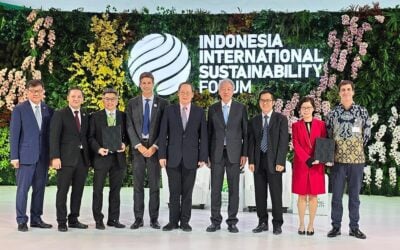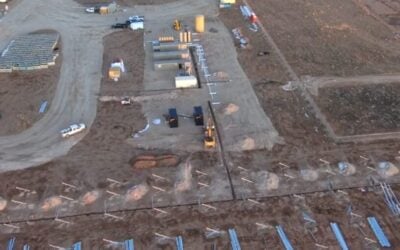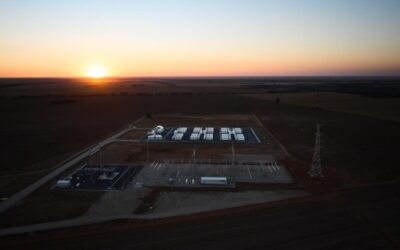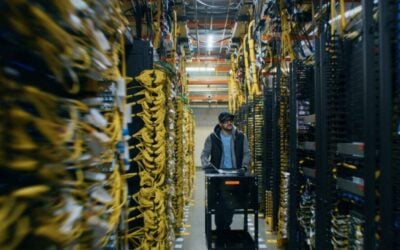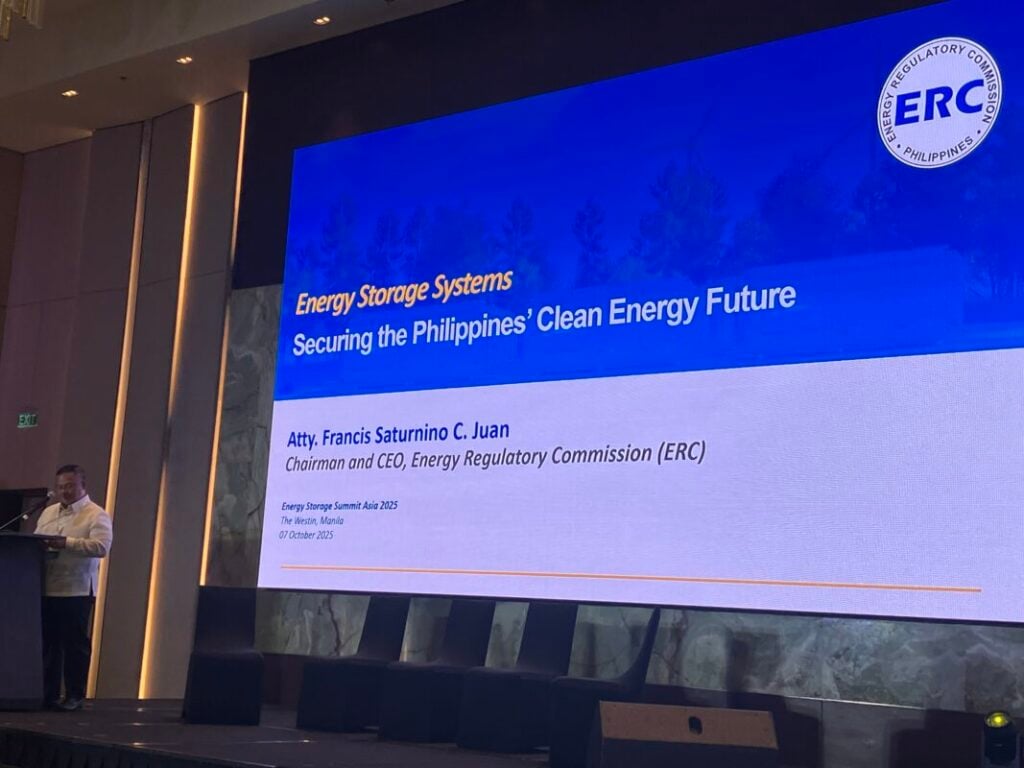
The Philippines needs to establish clearly defined rules for the market participation of energy storage systems (ESS), the chair of the country’s regulator has said.
Energy Regulatory Commission (ERC) chair Francis Saturnino Juan, in a keynote address at Energy Storage Summit Asia 2025 in Manila, the Philippines, said this morning that the crucial role energy storage can play across the Southeast Asian country is clear.
ESS can be the “beating heart of the grid,” in a new age of “active, intelligent energy management,” ensuring that the Philippines can meet its renewable energy policy goals and increase access to electricity across more than 7,000 inhabited islands, the ERC chair said.
However, there is a need for clear guidelines on aspects such as ownership models, grid connection agreements and safety and cybersecurity standards, which have yet to be established.
Try Premium for just $1
- Full premium access for the first month at only $1
- Converts to an annual rate after 30 days unless cancelled
- Cancel anytime during the trial period
Premium Benefits
- Expert industry analysis and interviews
- Digital access to PV Tech Power journal
- Exclusive event discounts
Or get the full Premium subscription right away
Or continue reading this article for free
With the government led by president Ferdinand Marcos Jr. recognising the need for storage in meeting a target of 50% renewables by 2040, the Philippines is already leading the region in the deployment of energy storage—primarily battery energy storage systems (BESS).
The ERC has drafted rules that are now being deliberated upon, which Saturnino Juan said will be instrumental in defining the next decade of energy sector planning.
“The outcomes of these rules will define the playing field for the next decade. We need regulations that recognise the unique, multifaceted value of ESS. We need frameworks that enable fair market access or storage,” Saturnino Juan said.
This includes a definition of how energy storage can participate in power markets, whether viewed as a generation asset, a transmission asset, a distribution asset or a customer-sited device or asset.
The chair alluded to some of those different value-generating functions of storage, including incorporating technologies such as grid-forming inverters into system planning.
“Our mission is clear: to build a grid that is not only cleaner but also smarter, more resilient and more equitable for all. Our goal remains to achieve reliable, affordable and sustainable power for all Filipinos,” Saturnino Juan said.
Positioning the Philippines as an ‘investment-ready destination’ for ‘digital, data-driven and energy intensive industries’
Bernice Garcia-Rama, assistant vice-president of Meralco, the Philippines’ largest power distribution company, highlighted the role energy storage could also play in driving economic development.
In a presentation that followed the ERC chair’s speech, Garcia-Rama said that the Philippines has the potential to be Southeast Asia’s new data centre hotspot. At the same time, the country is also the region’s most prolific adopter of electric vehicles (EVs).
Meralco serves nearly 27 million Filipinos across 111 cities and municipalities within a franchise area of 9,685 square kilometres.
While that means just under a quarter of the total population, Garcia-Rama said that half of the Philippines’ GDP is generated within the Meralco franchise,
“The new wave of foreign direct investment (FDI) coming into the Philippines isn’t just manufacturing, it’s digital, data-driven and energy intensive,” Garcia-Rama said.
“With this shift comes a new responsibility to make sure the Philippines isn’t just open for business, but ready for large-scale growth that demands world-class reliability, renewable [energy] integration and flexibility.”
These incoming new industries require “energy reliability, redundancy and sustainability at a scale we’ve never seen before,” with hyper-scale data centres, AI hubs and digital infrastructure at the forefront.
Meralco anticipates data centre growth in the Philippines of approximately 14% per year until 2029, reaching nearly 1GW of capacity by that time.
“Alongside [that], there are renewable energy developers expanding capacity to meet global decarbonisation targets and electric mobility companies from cab hailing to logistics, who are redefining what sustainable transport looks like in our cities,” the Meralco VP said.
“What ties it all together is one thing: they’re just not looking for a market to serve. They’re looking for a market that can power their growth reliably and responsibly.”
Meralco is preparing its grid with actions including collaboration with “partners in government, the energy industry and regional stakeholders,” integrating more renewable energy and preparing for potential new sources of energy such as nuclear, while using energy storage solutions to stabilise the grid and support reliability and sustainability goals, Garcia-Rama said.
Such actions could position the Philippines as an “investment-ready player for global-scale, energy-intensive industries.”
Other topics discussed in panels and presentations throughout the first day of the Energy Storage Summit Asia today included the government’s recently closed fourth round of Green Energy Auctions, GEA-4, the first to include a tranche of contracts for hybrid renewable energy with integrated storage.
This was described by panellists as a “good start” but one with certain limitations, such as a requirement for storage capacity to only match 20% of renewable generation.
Speakers also covered areas such as microgrids for rural areas and industries, hybrid renewable-plus-storage power plants, the potential for alternative technologies and lessons from other markets that could be applied across Southeast Asia.
The Energy Storage Summit Asia 2025 concludes tomorrow, 8 October 2025 at the Westin Manila.


